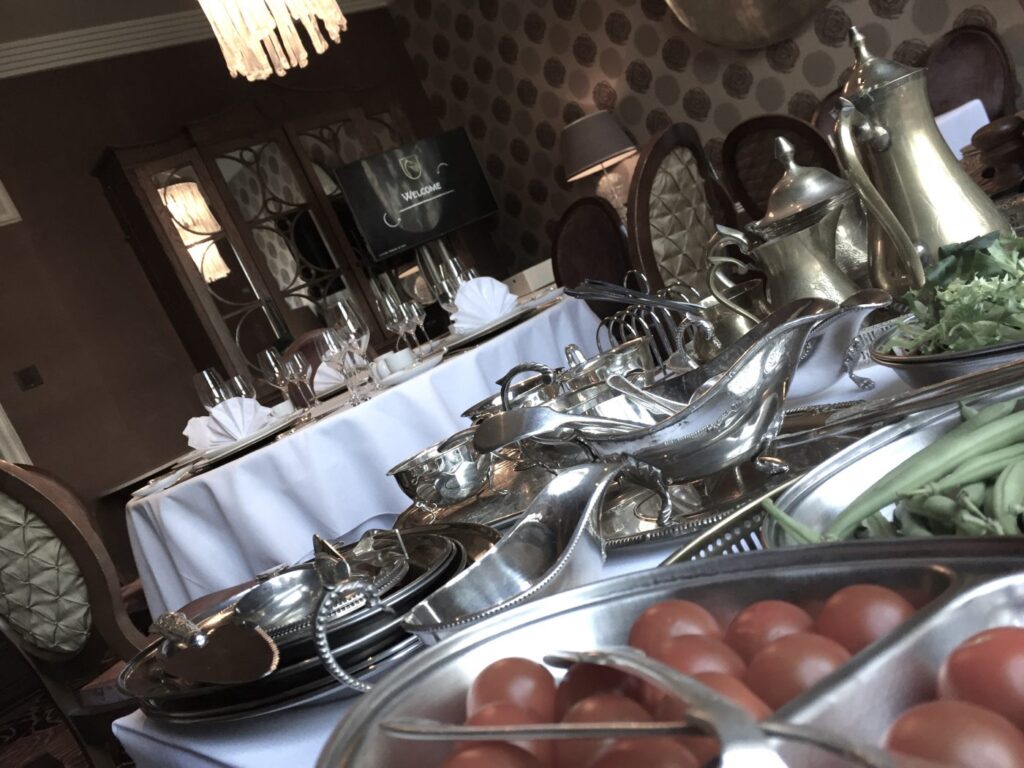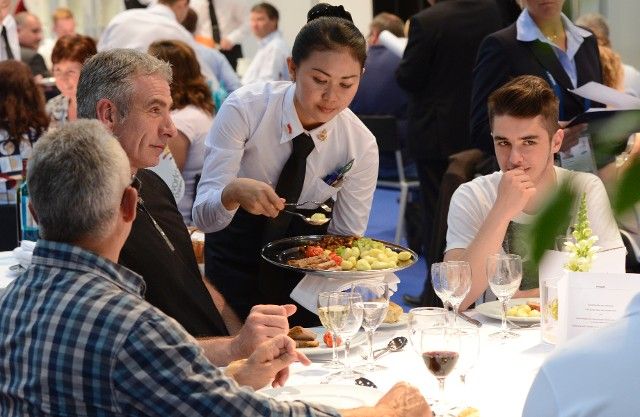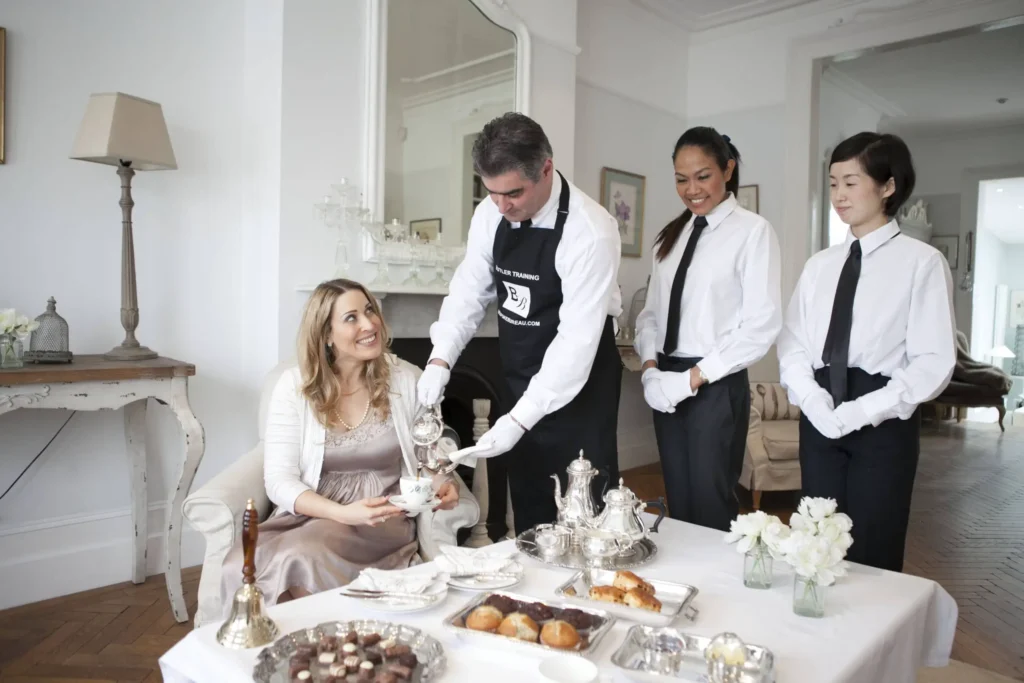Hotel Management Class Notes 24
What is Silver Service? A Brief Guide To Silver Service

Silver Service is an expression known to many. But do you actually know what it really means, and what it all entails? We often get asked, “what is silver service?”. So clearly, the answer is not as obvious as we thought.
There are many different facets to Silver Service that can be discussed elaborately, or taught in training. However, with the below we hope to give you a brief overview of the art that is Silver Service!

What is Silver Service?
Silver Service is the all-encompassing word for all types of (mostly) food and beverage service. Being it formal or informal. From pouring a cup of tea to synchronised service on a yacht through to cutting a cigar. It is a skill that requires education in the fundamental theory supported by hands-on practice.
You can find Silver Service practised by staff in private homes, hotels, restaurants, chalets and yachts.
Silver service has been around for hundreds of years. Starting with the origin of silver cutlery and tableware. But unless you’ve eaten at high-end restaurants/hotels or worked in wealthy homes, you may not have experienced silver service dining.
Historically upper-class British people have admired and respected the service referred to as Silver Service. This has become the ‘bar’ set for dining across the globe. It originates from the 17th and 18th century. On Sundays the normal wait staff in a private home would be given the day off. So the Butler (head of the house and staff) would be asked to step in to serve the food to the family. The Butler would walk around the table, serving the family or guests from his platter directly onto their plates.

How To? A Brief Overview Of Silver Service
Typically, Silver Service is performed from the left side. In France, this service is known as service à l’anglaise (“English service”).
- Food is always served from the left, drinks and plated meals from the left.
- The guest to the host/principals right is served first. (This is typically the most prominent guest of the principal).
- Service continues clockwise so you don’t bump into other servers.
- Plates and glasses are cleared from the right. Again starting with the guest to the host’s right.
- Glasses are stacked in a diagonal to the right (by course). Starting with wine and then lastly water glasses in front.
- You stand behind the guest, to the guests left side (as a general rule). Holding and supporting the silverware with food on it with your left hand. And then serve the food with your right hand. Using your right hand you use the pincers (normally serving fork/spoon) to serve the food.
Some Ground Rules Of Silver Service
The complete rulebook of “What is Silver Service” is rather large. However the below gives you an initial idea of some of the ground rules to adhere to.
- Never leave an empty space before a guest.
- Blend into the background. Excellent service is quiet, effortless and unobtrusive.
- The ratio of servers to guests depends on a) the number of courses and b) special prep required.
- Do not touch the plates!
- Single direction service.
- Atmosphere is important.
- Temperature of the plates are either cooled or heated due the type of food being served and in guidelines with the Chef’s requirements.
- Plates are served and cleared from the left side.
- Water and wine glasses remain on the table throughout the entire meal. As guests will have their own preferences on wines/beverages drunk. Only the sherry glass is removed.
Different Types Of Silver Service
There are many different types of Silver Service. And if you are in the hospitality industry it is vital to not only know the difference, but to be able to provide them flawlessly.
- Russian Service: Service à la russe (French, “service in the Russian style”) is a manner of dining that involves courses being brought to the table sequentially.
- Butler Service: A modification of silver service. In Butler service the guest helps themselves from a serving plate held by the waiter or Butler
- Buffet Service: Guests help themselves to food.
- Tray Service: Tray service can be breakfast, lunch or supper.
- English Service: The food is plated and brought to the host. Who then passes it along the table to the guests.
- French Service: Food is brought out at once in an impressive display
- American Service: Portions of food are plated in the kitchen. Bread, butter, and salads are served on the table.



